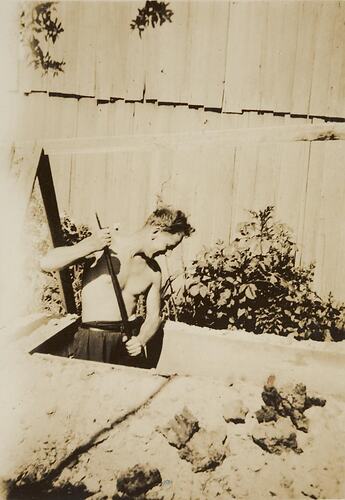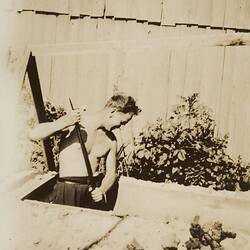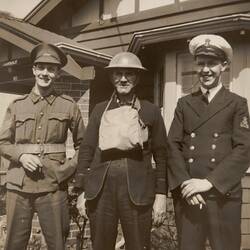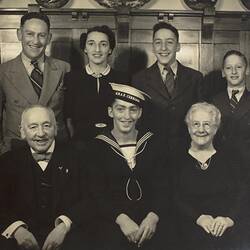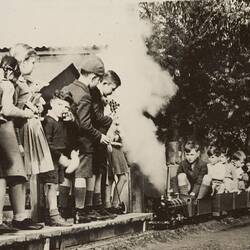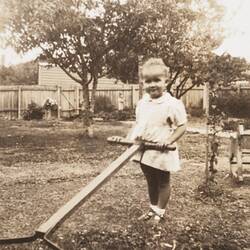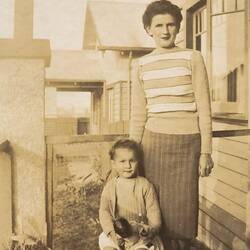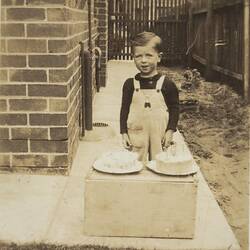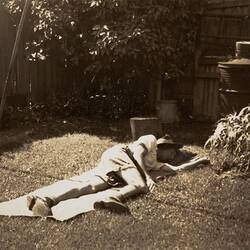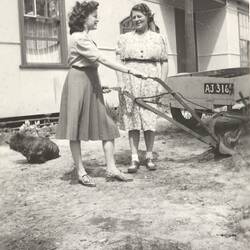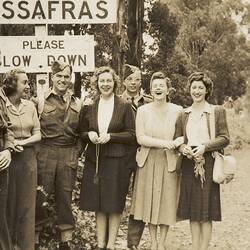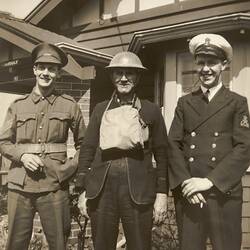Photographs in private albums form an important record of life at home and the front during World War II. By the outbreak of war, it was common for families to own inexpensive cameras that took black and white photographs, carefully placed in photograph albums. Some families put together 'grab albums' to take with them in case of bombing or invasion.
With the outbreak of World War II in 1939, thousands of Melburnians enlisted to fight, or joined the war effort at home. By early 1942, the war was no longer a distant conflict for Melburnians. Japanese forces were advancing in the Pacific, and Australia's northern coastline was being bombed. In Melbourne, anti-aircraft guns were installed at Maribyrnong, and 30 000 American troops were stationed in the city by mid 1942. Regulations clamped down on everyday life, controlling where people worked and what food, clothes and petrol they could buy. Even the number of football games and race meetings were restricted.
Melbourne's factories ramped up production, especially those making munitions, aeroplanes, textiles and food. Because labour was scarce, women worked in new areas such as heavy industry and public transport. The war changed the economic, industrial and cultural landscape of Melbourne forever.
Families faced particular challenges during the war. While fathers were away fighting, many mothers worked long hours in offices and factories and children helped grow vegetables in backyard 'victory gardens'. After Japan entered the war in 1942 and invasion threatened, the fear of bombing hung in the air; trenches were dug across school playgrounds, air-raid shelters were dug in suburban backyards, some city children were evacuated to rural areas and air-raid drills were held.
More Information
-
Keywords
-
Authors
-
Article types
